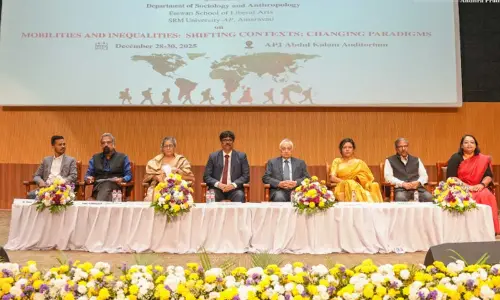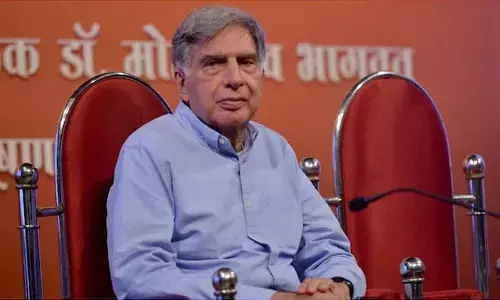What's spurring the Great Resignation Crisis?

Representational Image
The world is in the phase of recovery from Post Pandemic and preparing to face the Post Pandemic effects. One of the emerging trends in the Great Resignation wave aims to make the industry understand the change of intent of people.
The world is in the phase of recovery from Post Pandemic and preparing to face the Post Pandemic effects. One of the emerging trends in the Great Resignation wave aims to make the industry understand the change of intent of people. The Big Quit has globally reflected the greater rate of resignation and changing jobs.
As per the US Bureau of Labour Statistics, the number of total separations increased to 6.3 million, up 3,82,000 from the previous month in November 2021. Even though this global shift of industry is less likely to touch India because of variables such as social protection and per capita income of people of developing and developed economies, the storm has hit India, leading to 33 per cent of attrition in most of the industries.
Organisations have adapted very fast in VUCA created by Covid – this has even redefined the old school of thought. "Employees don't leave organizations but Managers." The trend of Big Quit is comprised of many variables comprising their own change in intent and taking a break from work because of negative trends in the industry.
Determining Pitfalls of Great Resignation
Quitting has been high since 2000, it is just that it broke records in 2020, and trends of BIG QUIT emerged. There are numerous diverse multi-faceted reasons for the Great Resignation. Where the employees have given up on burnout, they are also unhappy with the negative trends and narrowed trends of the industry. Non-recognition of talent, status quo practices of HR, non-transparency in policies are a few of them. Employees realising the transactional needs of bonuses etc., are not meeting their time of investment in the organisations.
Where the organisations are not able to understand the real reason, the real cause for this is multiple reasons of having connectedness with their peers, managers irrespective of salary, increment, etc. As per a recent survey by McKinsey, employers are unable to look at the relational elements like feeling valued at work and lack of belonging. Where employers still think that work-life balance, unmanageable workload, and feeling engaged at work are the prime reasons as per employees valued by the organisation, manager, sense of belonging, caring and trusting teammates, the potential for advancement and flexible work schedule are some of the more important reasons.
The employers must understand the deeper connection of employee experience for which the organisations are still struggling and trying to fix the reasons.
The Real Problem
Before the attritions get worsened, it is vital to understand that Great Resignation is across the industries and is real. Now, the dwelling point is how to turn around the strategies to make it to Great Attraction when money is not fixing all problems in the organisations.
It is a testing phase of leaders, and there is no escape from this. With the change of intent, whether you love it or hate it, but yes with the shift of mindset it is now an imperative to review true Leadership competencies.
To reduce the effects of unrelenting churns and turnover, it is crucial to understand the importance of the wellbeing of people and making them feel valued to the organisation. Values, purpose, connectedness and respect are some untouched elements that need a serious view and understanding.
Organisations must look to diversify their ways of boosting retention of their employees:
• Waiving off children education Loan.
• Appreciating and incentivising Loyalty.
• Identifying and creating a culture of Pay Vs Purpose.
• Take care of the families.
Employees are the stakeholders whose needs have taken a shift Post Pandemic and the Great Resignation is more like an Industrial Revolution with due importance given to the people's needs and appreciating their value and contribution towards the organisation. Organisations struggling with 30 to 33 per cent of attrition and many plants suffering even 100 per cent of attrition is now a serious and global crisis. The general analysis of the Indian market is difficult due to varied data across the industry. The labour cost is low and population resources are high in India. Remote working has opened avenues in Tier 2 and Tier 3 cities, yet they have to think about how to retain even these people and to fill the gap of talent to the organisations. With due emphasis on the training and development of people, the crisis can be mitigated to much extent.
Considering the low per capita income of India and the happiness Index score of India and also the 101st place out of 116 countries in the Global Hunger Index, the organisations must appreciate and empower the talent and emphasise continuous training and development. Also, they must improve the negative trends of inequality in employment.
Thus, it has become paramount to analyse the root cause of Big Quit, arrive at the best way to create an engaging and effective workforce by empowering the people at the workplace.
(Writer is an award-winning executive coach and IIM alumnus with strategic management as her forte. She is also a Gallup professional, speaker, writer and ex-Army officer)




















